I have always been fascinated by driftwood. The unique shapes and textures of each piece make them perfect for creating art and home decor. However, identifying driftwood can be tricky, especially if you are new to the hobby. In this article, I will share my knowledge of how to identify driftwood, so you can confidently collect and use it for your projects.
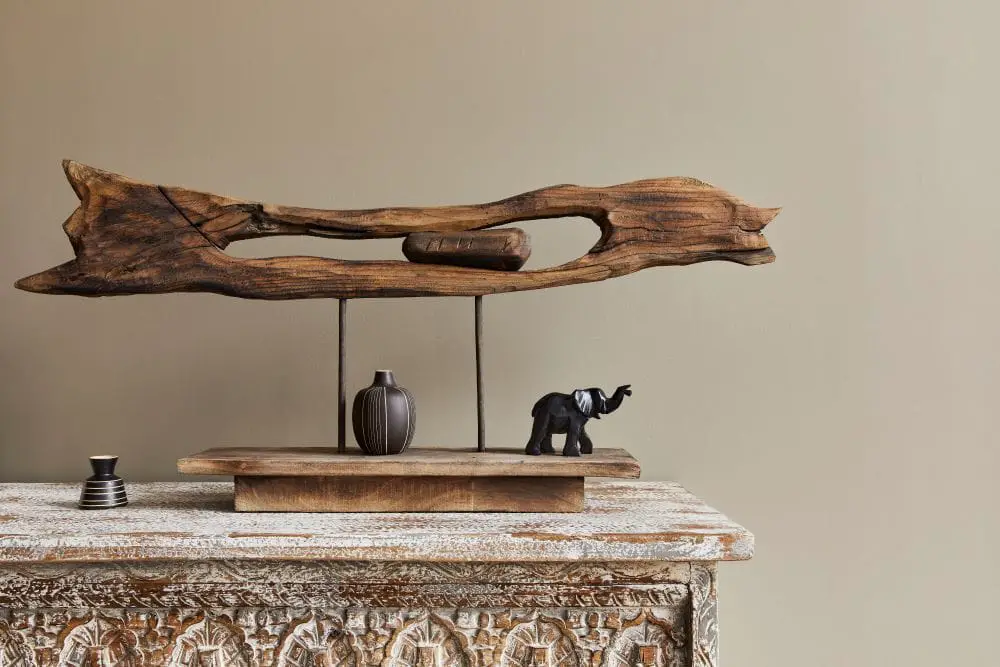
Driftwood is defined as “wood that has been washed ashore by the sea, a river, or a lake” source. It can come from a variety of sources, including fallen trees, shipwrecks, and man-made structures. The formation and weathering process of driftwood can give it unique characteristics, such as a smooth texture and interesting patterns. However, not all wood found on the beach is driftwood, so it is important to know how to distinguish it from other types of wood.
Key Takeaways on How to Identify Driftwood
- Driftwood is wood that has been washed ashore by the sea, a river, or a lake.
- Identifying driftwood requires knowledge of its unique characteristics and distinguishing it from other types of wood.
- Driftwood can be collected and used for art and home decor, but it is important to consider health and safety considerations.
Identifying Driftwood
As someone who has spent a lot of time working with driftwood, I have learned how to identify it based on its unique visual characteristics, texture and density, size and shape, color, and patterns. Here are some tips on how to identify driftwood:
Visual Characteristics
Driftwood is typically weathered and worn from its journey through water bodies. It may have a smooth surface or be rough and jagged. The texture of the wood can vary depending on how long it has been in the water. Driftwood may also have knots, holes, or other imperfections that add to its character.
Texture and Density
The texture of driftwood can range from smooth to rough, and the density can vary depending on the type of wood and how long it has been in the water. Some driftwood is light and porous, while others are dense and heavy. You can test the density of the wood by picking it up and feeling its weight.
Size and Shape
Driftwood comes in all shapes and sizes, from small pieces to large logs. Some pieces may be straight and narrow, while others are twisted and contorted. The shape and size of the driftwood can give you clues about where it came from and how long it has been in the water.
Color and Patterns
The color and patterns of driftwood can vary depending on the type of wood and how long it has been in the water. Some driftwood is light-colored, while others are dark. The wood may also have unique patterns, such as stripes or swirls, that can help you identify it.
When identifying driftwood, it’s important to consider all of these factors. By paying attention to the wood’s visual characteristics, texture and density, size and shape, color, and patterns, you can get a better idea of what type of wood you are working with.
Types of Driftwood
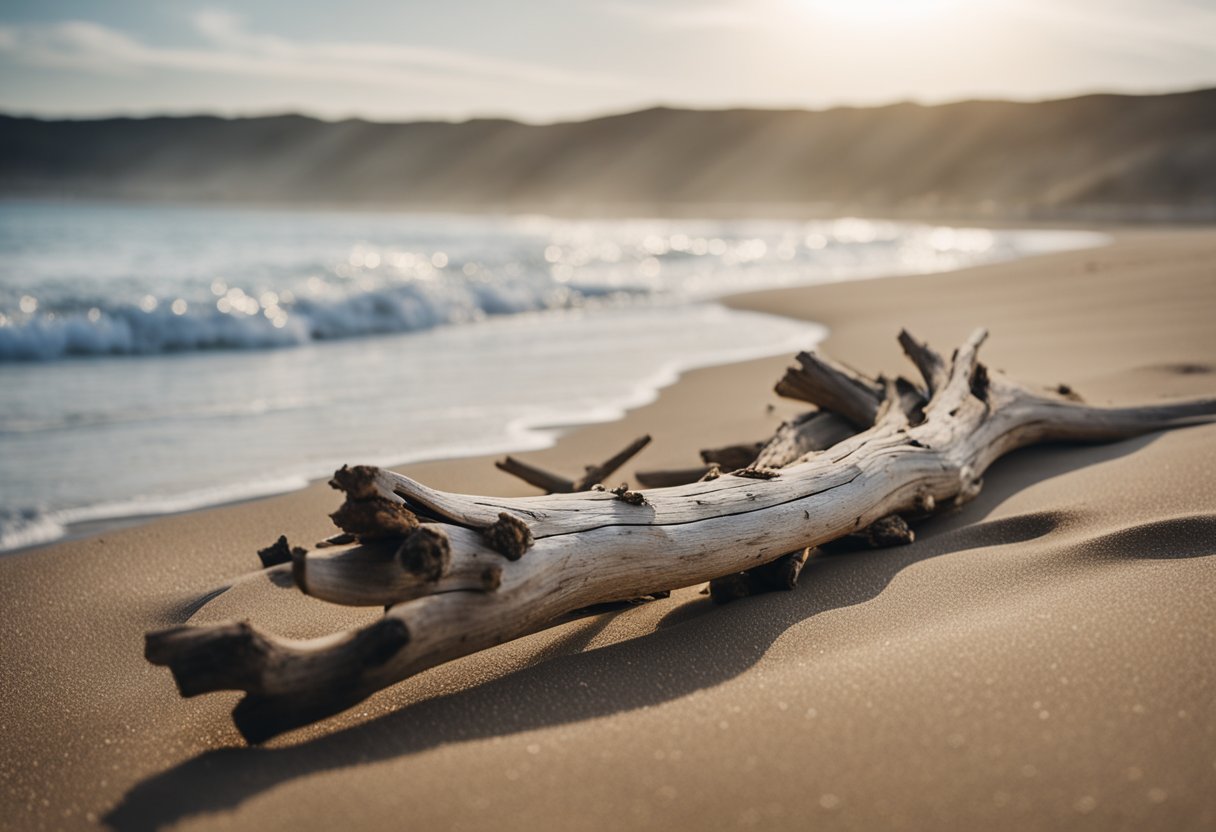
As driftwood can come from a variety of sources, it can be classified based on the type of wood and its origin.
Based on Wood Type
Driftwood can be made up of different types of wood, each with its own unique characteristics. Some of the most common types of wood found in driftwood include:
- Fir: Fir driftwood is known for its light color and relatively soft texture. It is often used in decorative pieces and furniture.
- Pine: Pine driftwood is also light in color and has a distinctive grain pattern. It is commonly used in aquariums and other decorative applications.
- Oak: Oak driftwood is darker in color and has a very hard texture. It is often used in furniture and other functional pieces.
- Elm: Elm driftwood is light in color and has a very distinct grain pattern. It is often used in decorative pieces and furniture.
- Cypress: Cypress driftwood is known for its light color and unique texture. It is commonly used in aquariums and other decorative applications.
Based on Origin
Driftwood can also be classified based on its origin. Some of the most common sources of driftwood include:
- Mangrove: Mangrove driftwood is often found in coastal areas and is known for its unique shape and texture. It is commonly used in aquariums and other decorative applications.
- Dead Trees: Dead tree driftwood is often found in rivers and streams and is known for its unique shape and texture. It is commonly used in decorative pieces and furniture.
Regardless of the type or origin, driftwood can be a beautiful and unique addition to any home or garden. When identifying driftwood, it is important to consider both the type of wood and its origin to determine its potential uses and applications.
Formation and Weathering Process
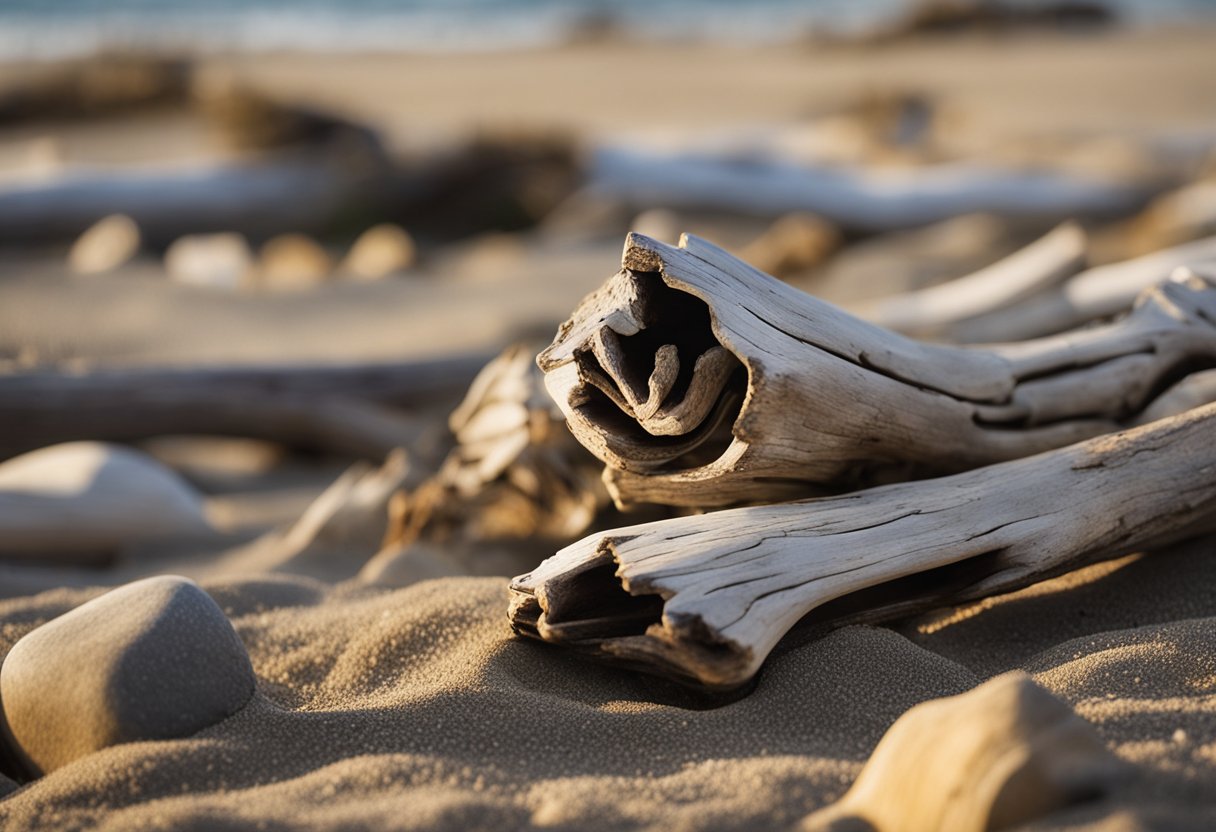
As the name suggests, driftwood is a type of wood that has drifted away from its original location. Driftwood can be found in rivers, oceans, and on beaches in coastal areas. The formation of driftwood is a natural process that can take several years and is influenced by various factors such as water temperature, currents, and the type of wood.
River and Ocean Driftwood
River driftwood is formed when trees fall into rivers and are carried downstream by the current. Over time, the wood is weathered and eroded by the water, which gives it a unique shape and texture. Similarly, ocean driftwood is formed when trees fall into the ocean or are carried into it by rivers. The wood is then shaped by the currents and weathered by the saltwater.
Weathered Driftwood
Weathered driftwood is a term used for wood that has been exposed to various factors such as moisture, sunlight, temperature, chemicals, abrasives, etc. This gives the wood a rustic and rough texture and appearance. Good quality driftwood should have a bold, pronounced grain pattern that stands out even after years of exposure to the elements. It should also feel smooth and polished when touched.
The process of weathering can vary widely depending on environmental factors such as water temperature, currents, and the type of wood. On average, it can take several years for a piece of wood to transform into driftwood through natural processes of erosion and weathering.
In conclusion, identifying driftwood requires an understanding of its formation and weathering process. By examining the grain pattern, texture, and appearance of the wood, one can determine whether it is driftwood or not.
Collecting and Using Driftwood
As an artist who loves to work with natural materials, I often find myself drawn to the beauty of driftwood. There’s something about the way the wood has been shaped and polished by the water that makes it a unique and captivating material to work with. In this section, I’ll share some tips on how to collect and use driftwood in your home decor and art projects.
Legal Aspects
Before collecting driftwood, it’s important to check if there are any regulations in your area regarding the collection of natural materials. Some lakes and rivers may have specific rules about collecting driftwood, so it’s always best to do your research beforehand. In general, it’s best to collect wood that has already washed up on shore rather than taking it directly from the water. This helps to preserve the natural ecosystem and prevent damage to aquatic habitats.
Preparation and Preservation
Once you’ve collected your driftwood, it’s important to prepare it properly before using it in your projects. Start by cleaning the wood with a stiff brush to remove any dirt or debris. If the wood is still wet, allow it to dry completely before using it. This can take several weeks or even months depending on the size and thickness of the wood.
To preserve the wood and prevent it from rotting, you can treat it with a wood preservative or sealant. Be sure to choose a product that is safe for indoor use if you plan to use the wood in your home decor projects.
Uses in Home Decor and Art
Driftwood can be used in a variety of ways to add a natural and rustic touch to your home decor and art projects. Some popular uses for driftwood include:
- Sculptures: Use smaller pieces of driftwood to create unique sculptures and three-dimensional art pieces.
- Wall Hangings: Arrange larger pieces of driftwood into interesting shapes and hang them on your walls for a statement piece.
- Furniture: Use larger pieces of driftwood to create one-of-a-kind furniture pieces such as coffee tables or benches.
- Crafts: Use smaller pieces of driftwood to create a variety of crafts such as picture frames, candle holders, and more.
Overall, driftwood is a versatile and beautiful material that can add a unique touch to your home decor and art projects. With proper preparation and care, you can create stunning pieces that will last for years to come.
Driftwood in Ecosystems
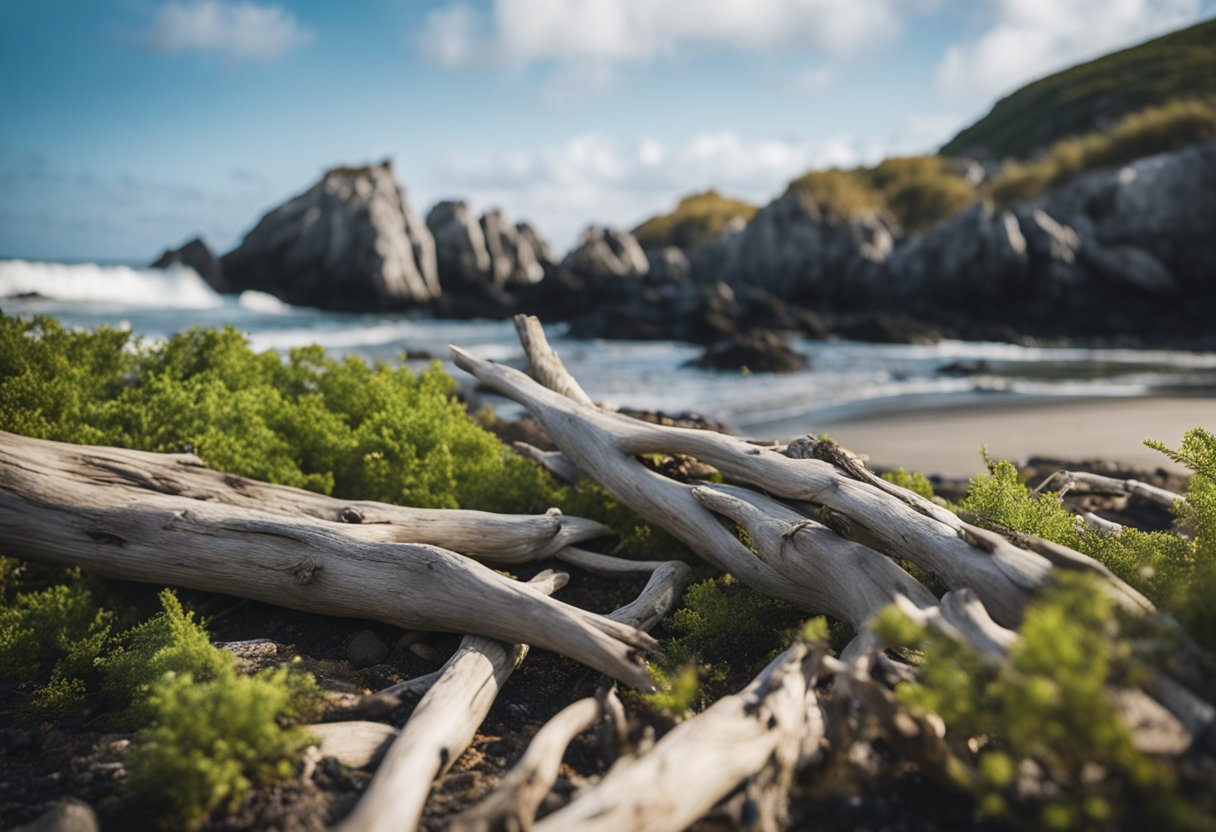
As driftwood floats in the ocean, it can provide shelter and food for various aquatic species. This makes it an important component of aquatic ecosystems. Driftwood can also help in the formation of habitats for fish, birds, and other organisms.
Aquatic Ecosystems
In aquatic ecosystems, driftwood can provide shelter for fish and other aquatic organisms. It can also serve as a substrate for various kinds of algae and invertebrates. Driftwood can also play a vital role in nutrient cycling as it decomposes, providing nutrients for the local flora.
Beach Ecosystems
Driftwood can also have a significant impact on beach ecosystems. As it washes up on shorelines, it can help to stabilize the sand and prevent erosion. In addition, it can provide habitats for various organisms such as birds and crabs.
Overall, driftwood plays an important role in various ecosystems, providing shelter, food, and habitats for various organisms. It is important to recognize the value of driftwood and to preserve it in order to maintain healthy ecosystems.
Health and Safety Considerations
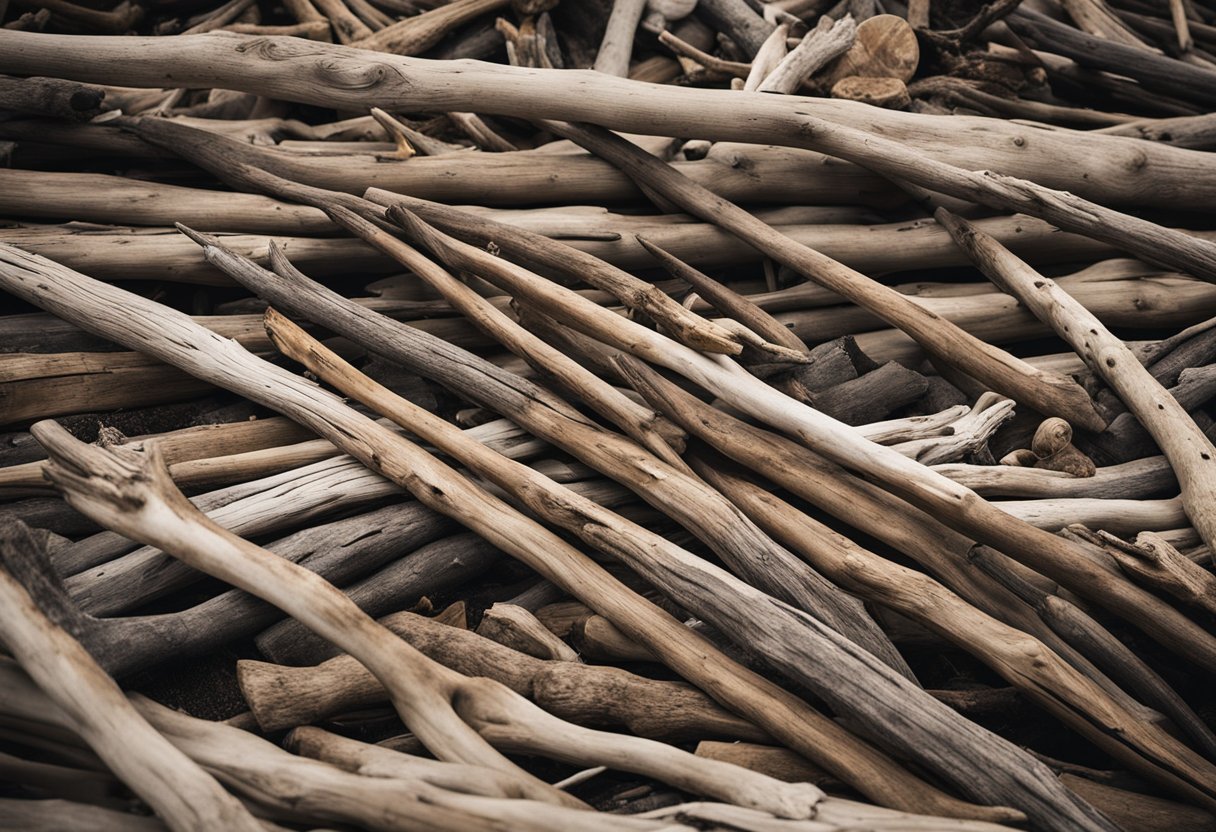
When working with driftwood, it is important to consider health and safety. Although driftwood can be a beautiful and unique material, it can also pose some risks if not handled properly.
One of the main concerns when working with driftwood is the potential for exposure to bacteria. Driftwood that has been in the water for a long time can harbor harmful bacteria that can cause illness. It is important to wear gloves and wash your hands thoroughly after handling driftwood to minimize the risk of exposure.
Another concern is the potential for rot and decay. Driftwood that has been exposed to the elements for a long time can be weakened by rot and decay. It is important to inspect the driftwood carefully before using it to ensure that it is sturdy and safe to work with.
Driftwood can also contain tannins, which can leach into the water and cause discoloration. If you are using driftwood in an aquarium or other water feature, it is important to soak the wood thoroughly before using it to minimize the risk of tannins leaching into the water.
Finally, it is important to consider the potential for pollution when using driftwood. Driftwood that has been exposed to polluted water can contain harmful chemicals and toxins that can be harmful to human health. It is important to source driftwood from clean, unpolluted sources to minimize the risk of exposure to harmful pollutants.
Overall, by taking the proper precautions and following safe handling procedures, driftwood can be a safe and beautiful material to work with.
Frequently Asked Questions
How can I differentiate between driftwood and regular wood?
Driftwood is wood that has been washed up on shore by water. It can be difficult to differentiate between driftwood and regular wood, but there are a few key characteristics to look for. Driftwood is often weathered and has a smooth, polished surface. It may also have a unique shape or texture that sets it apart from regular wood. If you are unsure, you can try soaking the wood in water. Driftwood will float, while regular wood will sink.
How do I identify cedar driftwood?
Cedar driftwood is often a light brown color and has a distinct cedar smell. It is also lightweight and may have a rough texture. Cedar driftwood is commonly used in furniture and home decor.
What are the characteristics of oak driftwood?
Oak driftwood is usually a darker color than cedar driftwood and has a more pronounced grain pattern. It is also heavier and denser than cedar driftwood. Oak driftwood is often used in construction and woodworking projects.
Where is the best place to find driftwood?
Driftwood can be found on beaches, rivers, and lakes. Look for areas where water meets land, such as near riverbanks or on the shore of a lake. Storms and high tides can also wash up driftwood on beaches.
What are the common uses for driftwood?
Driftwood is often used in home decor and furniture making. It can be used to create unique and rustic pieces that add character to a room. Driftwood can also be used in landscaping and garden design.
What features should I look for to identify driftwood from a photo?
When identifying driftwood from a photo, look for a smooth, polished surface and a unique shape or texture. Weathering and exposure to the elements can also be a clue that the wood is driftwood. However, it can be difficult to accurately identify driftwood from a photo, so it is best to see the wood in person if possible.

Hi, I’m Sal Muller of Tooltrip.com. My DIY experience led me to understand essential power tools for home projects. Tooltrip.com guides enthusiasts and professionals in choosing right tools for any job. I provide concise top tool reviews for easier, efficient DIY.

